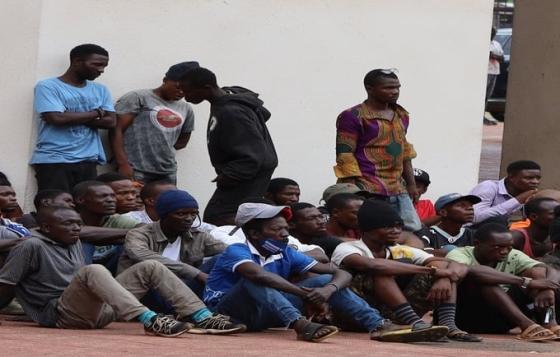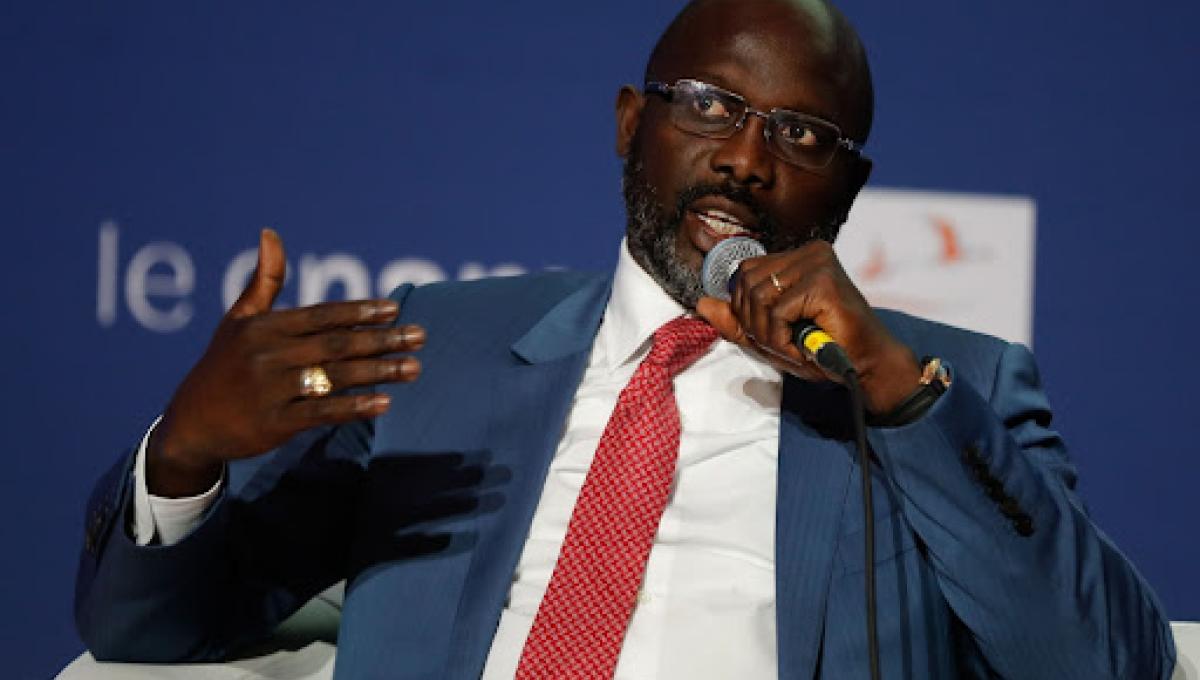Drug Addicts’ Rampage: 2 Die, Several Injured in Clash with Angry Mob

Central Monrovia was a scene of chaos and lawlessness during the afternoon hours of Saturday when cutlass wielding drugs addicted youth, known as zogos, went on the rampage looting, and harassing Christmas shoppers, store owners and other vendors. Two of the assailants are said to have died and several injured after an angry mob, led by motorcyclists, decided to repel their attacks on peaceful citizens.
The attackers, with deadly objects held high in the sky, moved from stores to stores at one point of the city to the next harassing individuals. “Out of the many attackers, two will not be able to recount this new Christmas adventure they have started,” a man said after the situation subsided. “Thanks to our young people who were brave enough to stand up to them.”
The “at risk youth” as they are formally known, reportedly went amok after a planned meeting with representatives of the Executive Mansion—the office of President George Weah—when they were expecting to receive their usual holiday packages did not take place. The President’s Chief of Protocol, Finda Bundoo, who the disadvantaged youth and others often refer to as “Rescue Mother,” did not turn up.
They had earlier gathered at the Antoinette Tubman Stadium (ATS), the usual venue, to await the Executive Mansion team. But with no one insight upon waiting endlessly, the zogos could not take their frustrations in vain, retorting to venting their anguishes on vendors and shoppers who were on rush hours trying to beat the late Christmas Eve hours.
Eyewitnesses said in live online TV reports that the motorcyclists and other bystanders could no longer tolerate the aggression of the zogos, who many believe were under the influence of narcotic drugs, as they went on their looting sprees to get money and other valuables. The chaotic scene led many to run helter-skelter through the city, with many shops forced to close.
“The motorcyclists really help us. If not for them the situation was going to be worse,” a store owner on Broad Streets, who was lucky to close his store before the assailants’ arrival said. “We are not safe in this country.
She said the motorcyclist bravely stood up to the zogos before others started mustering the courage to join in. “We must be thankful to the cyclists, they saved the day, at least,” she said, adding that many of them also got wounded and were carried away by their friends.
Before the cyclists’ intervention, many people had already fallen prey to the zogos. “They attacked an older man and took away everything he had on him,” an eyewitness said. “The man was trembling terribly and could do nothing.
The Saturday mayhem in Central Monrovia is not an isolated case, as the zogos have a history of terrorizing the public. A scuffle with officers of the Police Support Unit (PSU) of the Liberia National Police and the Liberia Drug Enforcement Agency (LDEA) in the commercial area of Duala on the Bushrod Island, outside Monrovia, in November 2021 led to the deaths of three people.
The police were reportedly forced to fire live bullets during a crackdown on suspected armed robbers and drug dealers. “The joint security attempted to raid the notorious Kuwait ghetto in the area when the “zogos” retaliated by throwing deadly weapons and other objects, and they later began terrorizing business owners and passersby,” a government spokesman told a press conference.
In another situation, about 30 worshippers, including a pregnant woman, died in a stampede that occurred at the D. Twe football field in the Borough of New Kru Town, outside Monrovia, after a criminal gang of zogos reportedly staged a hijacking and robbery attack from the main entrance of the field.
Zogos’ Sense of Entitlement
It is no secret that sounds of the guns that reverberated across Liberia for over 14 years are no more but the country still faces two existential threats: land conflicts and the proliferation of disadvantaged and vulnerable youths (zogos).
Reports from the United Nations (UN) and other international bodies rate the two as imminent threats to the peace and stability of the nation. But many are of the opinion that the latter is the most critical due to the high increase in the number of disadvantaged youths.
Many therefore became weary when the Weah led government provided hundreds of zogos LD$5,000.00 each in 2019 as their Independence Day celebration package. The President’s Chief of Protocol said it was his way of identifying with them during the festive season.
But that “act of kindness” many believed, has led to a sense of entitlement engulfing zogos, many of whom professed to be CDCians who helped bring the President to power—while propelling their political institution to state leadership.
“They now feel as legitimate stakeholders of Liberian society and not as a group of people who need help to transform their present conditions,” Montserrado County Senator, Darius Dillon, said in an interview after the New Kru Town Crusade stampede. “The President had no clue as to what he was doing. We all are seeing what those guys are doing now. They now feel entitled and they are becoming powerful because the President has endorsed their habit.”
Senator Dillon is a staunch advocate for zogos rehabilitation and has since built a center to help some of them. There has been none since the war ended. “Every household in this country has at least a zogo and this is what we are taking lightly. This national neglect of our young people will come back to haunt us if we don’t start to address the situation now,” he said. “We need to rehabilitate, detoxify and reintegrate this group of our population that is getting larger by the day. The ones that are able should be provided scholarships, especially vocational skills training so that they can become meaningful citizens again.
The government, however, launched a US$13 million National Fund Drive in June this year. President Weah noted that the fund drive, a joint initiative of the government and its development partners, is aimed at addressing the ever-worsening plights of at-risk youth in the country to not only ensure a better future for thousands of citizens in this category of the population but also ameliorate the socioeconomic and security risks they pose to the country.

